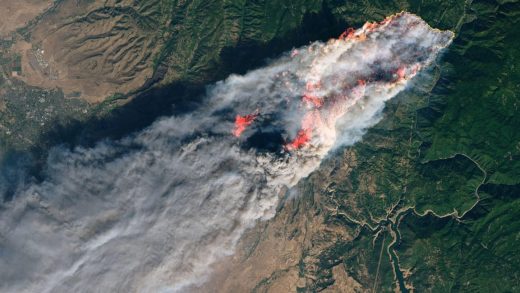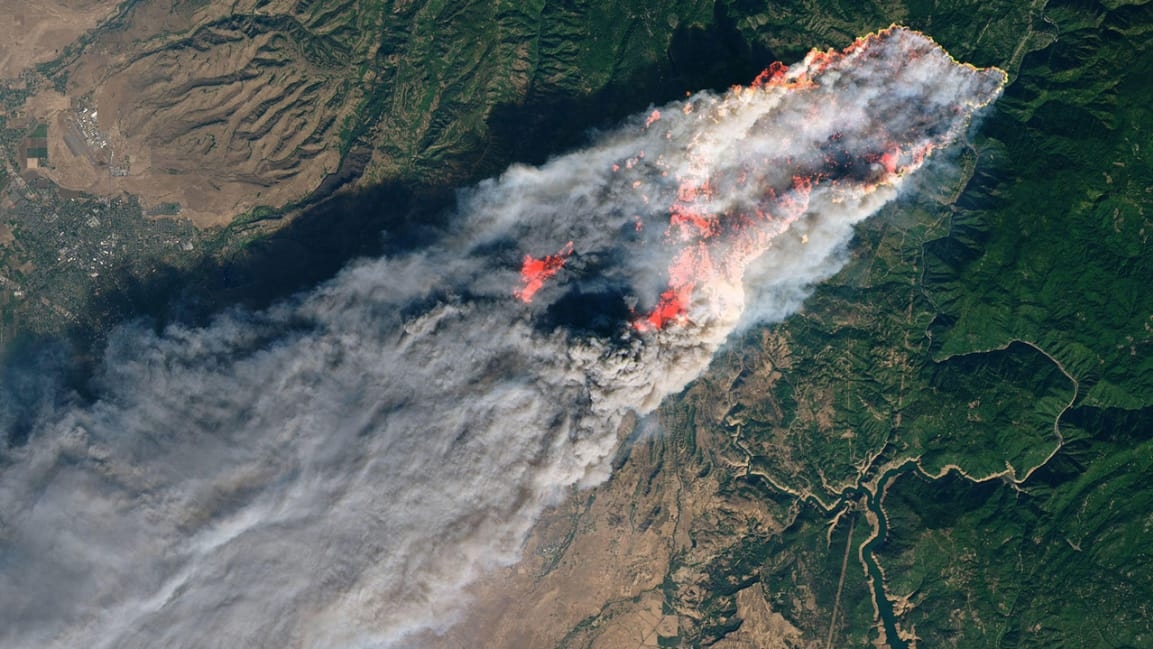Future wildfires will be fought with algorithms
Last year was California’s most destructive wildfire season on record, with more than 1 million acres burned. This year is breaking different records. The Camp Fire is the deadliest wildfire in California history, with 85 people dead and 249 listed as missing. Officials said the fire, which was 100% contained on Sunday, has also destroyed some 19,000 buildings, most of them homes.
As climate change threatens to expand the size of fires and make fire season an around-the-year event, government agencies, researchers, and companies are turning to AI to cut through a chaos of the data that precedes and comes out of these disasters. The hope is that earlier detection will help firefighters stop them from getting out of hand, aid in recovery, and prevent future fires from starting to begin with.
Fighting fire from space
Currently, most fires are reported by 911 calls, commercial flights, or fire lookout stations. That spotty approach lets some wildfires go undiscovered for hours or even days. Satellites focused on the Earth can improve coverage. Already, two NASA satellites currently orbiting the Earth scan nearly the entire planet once a day and can spot the thermal signature of a fire. The process takes at least three hours, which is about the time it takes for the satellites to cross over Goddard Space Flight Center outside of Washington, D.C., beam down the data, and run the images through a supercomputer.
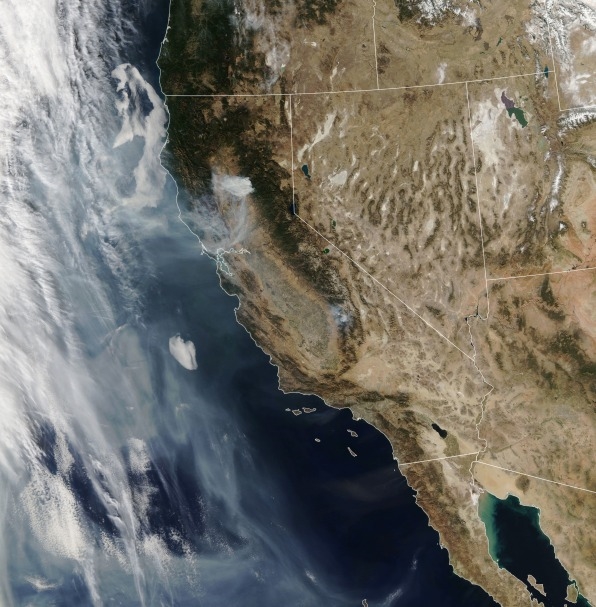
But an algorithm could be run on the satellites and process images in a matter of minutes, says James MacKinnon, a NASA computer engineer running a new AI project looking to do just that. MacKinnon scaled down the work that the supercomputer does into a neural network that is small enough to run on the simple, onboard computers typical of satellites. He trained the system on a year’s worth of satellite imagery from around the world and created a system that is 98% accurate at recognizing fires.
“The fires stick out like a sore thumb,” he says.
In the future, an AI-based system like this on a fleet of small satellites could provide more regular contact with Earth, with the ability to send near real-time alerts to emergency responders on the ground.
Digital humanitarianism
Even after the immediate threat of a fire recedes, time is of the essence for finding survivors and getting help to the people that need it. But figuring out the best way to get limited available resources to disaster victims is an unsolved problem.
Some researchers are mining social media data to improve disaster response. Going through it manually would be impossible, but different AI tools could pinpoint the most crucial messages. A recent paper by researchers at Texas Tech and George Washington University titled “Coordinating Disaster Emergency Response with Heuristic Reinforcement Learning” documented a machine learning system that can analyze tweets and identify volunteers and victims, along with their locations.
“Our proposed new disaster relief framework bridges the gap when traditional emergency help lines such as 911 are overwhelmed, thus benefiting both the disaster victims and the non-governmental organizations seeking to help them,” the authors wrote.
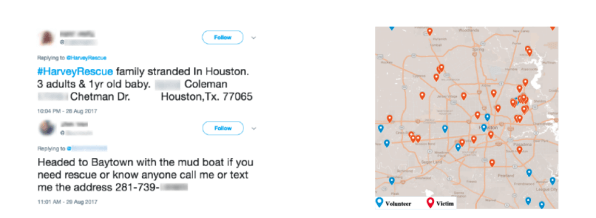
Another system, Artificial Intelligence for Disaster Response, or AIDR, is a free and open platform to label social media messages discussing emergencies, disasters, or humanitarian crises. AIDR uses machine learning to classify millions of tweets and Facebook posts about a disaster. Emergency responders train the system by giving it a list of keywords to look for, like #Campfire, or “Paradise fire,” or a geographic area from which to pull social media posts. The system takes as little as 30 minutes to learn about the disaster.
From then on, emergency responders get real-time updates on social media posts that are relevant to the situation they are monitoring. A map shows where geotagged posts are coming from and approximates where non-tagged information is coming from. There is also a list of posts, organized in order of what the algorithm decides is most urgent or relevant, along with information about most commonly used words, like locations or names. AIDR researchers are also working on using computer vision to label photos as showing damage or not. Relying on people on the ground to acquire this sort of data could take days or weeks.
“We wanted to lower the time between when a disaster strikes and response,” says Muhammad Imran, a scientist at Qatar Computing Research Institute in Doha, Qatar, where AIDR is based.
Only you (or AI) can prevent forest fires
To prevent fires from igniting in the first place, AI will need more types of on-the-ground data. A pair of high school students in California is developing a tool that could pinpoint dry forest areas that are susceptible to wildfires. Typically, measuring biomass of fallen branches and leaf cover is challenging or labor intensive, and requires a physical visit to the area. Using sensors and Google’s TensorFlow machine learning tool, Sanjana Shah and Aditya Shah built something called Smart Wildfire Sensor to capture photos of nearby fallen branches and leaves and estimate an area’s biomass, moisture content, and size to determine how much dead fuel is present, and thus the likelihood of a fire.
The students say that Smart Wildfire Sensor would be able to predict the possibility of wildfire down to a 100-square-meter level. The project is now in the running for Google’s AI for Social Good program, which will disperse $25 million in grant funding to winning teams.
For a more holistic view, SilviaTerra, a San Francisco-based company, creates maps that break down the composition of forests across the continental U.S. Using satellite imagery, the maps are made up of pixels that represent 15-meter-by-15-meter areas of forested lands and include a list of trees in each section. The company’s initial clients were timber companies, but with a grant from Microsoft’s AI for Earth program, SilviaTerra wants to use its maps to combat wildfires, too. By helping point to “fire mitigation hot spots,” the maps could help planners figure out how and where to intervene, says Max Nova, a cofounder.
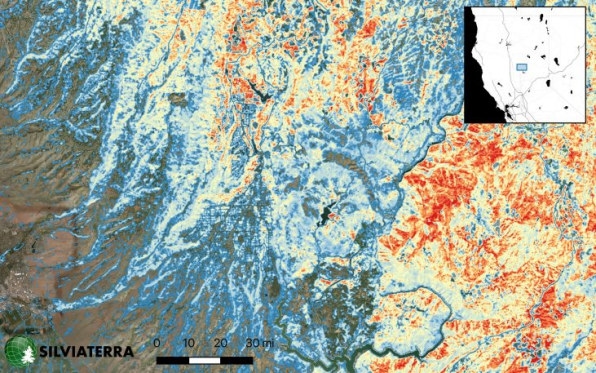
“It’s going to allow forest managers everywhere to reduce catastrophic fire risks,” says Nova. Before this effort, Nova says there wasn’t a lot of data out there about the makeup of forested land, not for small owners or even big government. What was out there was coarse, with basic information or averages of a given area.
Beyond strategies for addressing immediate threats, it’s possible to use such maps to develop a longer strategy by looking at data such as an area’s carbon sequestration ability, habitat, and groundwater levels, according to Zack Parisa, the startup’s other cofounder.
“It’s not only the state of the forest,” he says. “But what are the lowest-hanging fruits to make sure that this is not the new normal?”
Fast Company , Read Full Story
(33)

